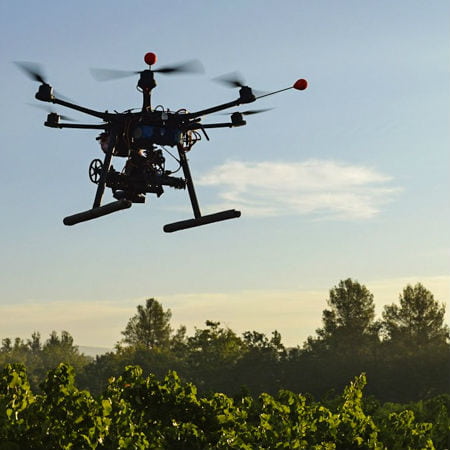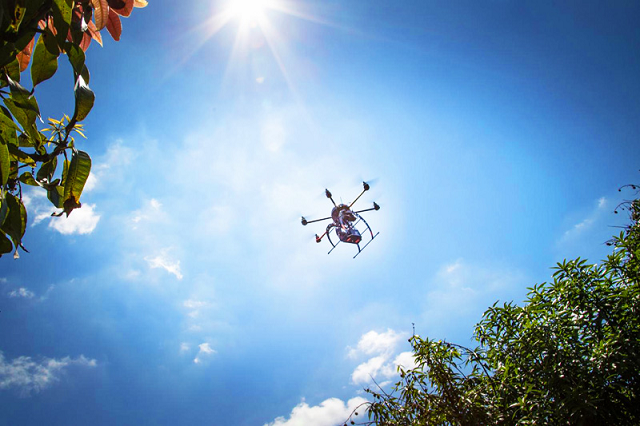
Some call them unmanned aerial vehicles (UAVs). Others prefer the term miniature pilotless aircraft or even flying mini robots. But most people, however, know them simply as drones. Whatever you might wish to call them, it is undeniable that drones, ever since their invention, are rapidly becoming more and more popular as the years go by. While it can be said that they’re still far from achieving mainstream popularity and mass usage, drones have started to break through the extremely rigid barriers in many industries which previously seemed impenetrable by other technological innovations.
In recent years, for example, drones have managed to infiltrate certain processes of various businesses and organizations and boosted certain areas in their operations that were either suffering from delays or becoming stagnant. From making rush-hour deliveries possible to performing difficult military tasks, drones are indeed proving themselves useful. For this reason, they are becoming popular in many sectors, particularly the commercial, military, personal, and future technology sectors.
Military Sector
Although drones have just recently gained popularity, they have been in existence for several decades, dating back to the World War I era, when the French and US governments started developing and producing unmanned airplanes for military use. At present, drones are used for many purposes in the military sector, such as for target decoys, supervision, research and development, and even combat missions. They are of such use in the military to the point that the specific sector is said to be the top driver of drone spending, especially in the recent years. In the long term, drones will help in preventing or at least minimizing losses as well as executing time-sensitive and high-profile missions. In light of this fact, it can only be said that UAVs, or drones, will continue to be used in the military and applied in many operations.
Commercial Sector
While the military has long made use of drones in their sector, the same thing couldn’t be said of the commercial, at least not until recently. At this very moment, for instance, drone commercial usage has been enjoying a steadily increasing popularity among multiple industries, who are suddenly seeing the appeal of using drones in their regular business operations. Although the commercial drone industry is still relatively new, it is steadily gaining the financial support of investors such as chip companies, industrial conglomerates, IT firms, and the like. With such financial backing, it can only be a matter of time before companies will discover new functionalities for drones in a diverse selection of niche spaces. Soon enough, we will be seeing drones being put to work doing common tasks like fertilizing and watering crop fields automatically. They can even be equipped to monitor traffic incidents, survey remote areas of land, or deliver pizzas to your door.
Personal Sector
The personal, or civilian, sector is another area in which drones are beginning to enjoy a rise in sales, with some experts predicting that sales will reach approximately $12 billion by 2021. The civilian sector makes use of drones in many ways—still photography, recording footage, filmmaking, and even gaming. There are many kinds of drones available in the market; they come in various sizes and prices. There are the single-rotor devices that are the most cost-effective. On the opposite end of that scale are the huge quadcopters that cost around a thousand dollars and come equipped with various features like GPS, first-person control, and multiple camera arrays.
Future Technology Sector
Like with any invention, drones are outputs of technology that are continuously evolving. Right now, the future technology sector is seen to be making groundbreaking and progressive discoveries. In fact, the next generation for drones is already in process, with famous software company 3DRobotics announcing that they had designed and built the first smart drone and had called it Solo. It had several appealing features such as built-in compliance technology, safeguards, and self-monitoring.
Drones are indeed the new superstars in drone technology, especially if you were to consider the opportunities that come about in the military, transportation, logistics, and other similar sectors.
Multiple Uses of Drones
Drones are used in many ways, and whether you’re a hobbyist or a soldier supervising a critical military area, you cannot deny its wide range of benefits. Some of its major uses are the following:
- Capturing aerial footage for documentaries and film and TV productions
- Gathering and disseminating information and supplying agencies with the basics for proper disaster management
- Rescuing survivors of natural disasters such as earthquakes, typhoons, fires, and the like
- Monitoring border-control surveillance
- Express delivery and shipping
- Setting up of thermal sensor drones for search and rescue operations
- Geographic surveying and mapping of remote places
- Performing inspections for building safety
- Transporting unmanned cargo
- Watering and fertilizing plants and crops
GPS Drones Could Plant 1B Trees Every Year with New Technology
Around three to six billion trees are cut down every year to make way for crop planting or land grazing, and sometimes, even urbanization or industrialization of certain areas. The damage done to the ecosystem could make a great negative impact on the earth, which is why it is imperative to restore ecological balance and plant trees again. And thanks to GPS drones for tree planting, it will be made easier.
Scroll down for video

ANU College of Law
In fact, last year, a million seedlings were planted in a day by charitable organization Ecuador. It produced a stunning result, but it will need more than just a million trees daily to match the rate of deforestation.
GPS Drones for Tree Planting
UK company BioCarbon Engineering has an answer to the problem. BioCarbon Engineering, a start-up company using GPS drones, won the grand prize at the Hello Tomorrow Challenge, and they have recently committed to implanting with the help of GPS drones for tree planting in South Africa. Manual tree planting is costly and will put a small dent in the reversal of damage done by humans on earth, but with the use of BioCarbon’s technology, they can help deliver precision planting and mapping to increase the uptake and help improve forest development.
NASA engineer and BioCarbon CEO Lauren Fletcher and his team planned on using multiple rotors and fixed-wing drones to plant 1 billion trees per year. The process will begin by deploying fixed-wing drones to evaluate areas that need replanting and create 3-D maps of the said area for examination. Using mapping data, multiple-rotors could shoot seed pods in different locations and in large quantities, similar to how a paintball gun shoots pellets. The GPS drones for tree planting audit the growth position, and information will be used to evaluate the ecosystem, ensuring that better planting methods will be used in going forward with the plan.
BioCarbon aims to plant trees as well as experiment with different environments and conditions that could help determine and strengthen the quality of farming strategies in the future.

IFLScience
The company’s mission stated, “Destruction of global forests from lumber, mining, agriculture, and urban expansion destroys 26 billion trees each year. We believe that this industrial scale deforestation is best combated using the latest automation technologies. We are going to counter industrial scale deforestation using industrial scale reforestation.”
The company uses fixed-wing GPS-enabled drones to evaluate parcels of land. The data collected are examined and used together with a machine that learns the algorithm to make a planting platform. A multiple-rotor drone is then launched to shoot seed pots at a particular location in a process called precision forestry.
The head of engineering at BioCarbon, Susan Graham, said about the vision, “Instead of having a spade, they’ll have a drone.”
There are many benefits for using GPS drones for tree planting. For instance, less manpower is needed and drones can go to places that are far too dangerous for people to embark, yet there is a possibility that trees can be planted there. The planting platform also distinguishes which locations are more favorable for young trees to develop, so planting is more optimized and there are lesser chances of plants just withering through time.
Still, these devices and other similar tech are not expected to replace humans; GPS racing drones are used to complement tasks and efforts.

eBubble
“Drones are a tool and you use them when it’s the right location and for the right reason,” Fletcher shared. “It doesn’t mean replacement.” With their plans in place, BioCarbon should hopefully be able to plant the one billion trees a year using GPS drones.
Because drones have so much value, you need to take good care of them. And what better way to do that than by investing in a GPS tracker? Such a device can monitor the wearer’s whereabouts and give out an instant call for help. It can even give health updates regarding the wearer. As the world’s leading company in the development and manufacturing of GPS trackers, Trackimo offers lightweight but super effective tracking devices that can help you secure those things that are important to you.
Watch the video below